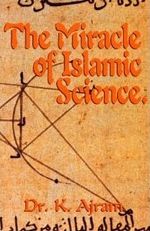From WikiIslam, the online resource on Islam
Jump to navigation
Jump to search
|
|
| Line 30: |
Line 30: |
| <option weight="1">{{Pictorial-Islam|1=Qur'an and Semen Production (Qur'an 86:7)|2=[[File:Hippocrates.jpg|190px|link=Quran and Semen Production]]|3=This article analyzes the various attempts to show that the Qur'an correctly describes semen production from between the “sulb” and the “tara’ib” in verse 86:7. | | <option weight="1">{{Pictorial-Islam|1=Qur'an and Semen Production (Qur'an 86:7)|2=[[File:Hippocrates.jpg|190px|link=Quran and Semen Production]]|3=This article analyzes the various attempts to show that the Qur'an correctly describes semen production from between the “sulb” and the “tara’ib” in verse 86:7. |
|
| |
|
| There are at least seven distinct classes of explanations, and none of them are supported by modern scientific knowledge and are frequently conflicting. For example, Ibn Kathir refers to tara’ib as a female organ, while other tafsirs claim it belongs to the man. Another conflict is the definition of sulb to mean either the backbone or the ‘hardening’ of the loins. ([[Quran and Semen Production|''read more'']])}}</option> | | There are several distinct classes of explanations, and none of them are supported by modern scientific knowledge and are frequently conflicting. For example, Ibn Kathir refers to tara’ib as a female organ, while other tafsirs claim it belongs to the man. Another conflict is the definition of sulb to mean either the backbone or the ‘hardening’ of the loins. ([[Quran and Semen Production|''read more'']])}}</option> |
|
| |
|
|
| |
|
Revision as of 08:27, 18 March 2014
Also see: Template:Pictorial-Islam
Setting the Record Straight: The Non-Miracle of Islamic Science
|
|

|
|
This is a refutation of Dr K. Ajram's Setting the Record Straight: The Miracle of Islamic Science. The purpose of this analysis is to put the achievements of Golden Age Muslim scientists in the proper perspective; neither denigrating their achievements nor inflating them.
All scientific and technological progress is accomplished in progression; Muslim achievements are but links in the chain. Few of the great Muslim scientific achievements stood alone, but were derived by Muslim scientists standing on the shoulders of those who came before them.
This analysis also highlights the fatal flaw of the Islamic Golden Age. There were few ‘follow-up’ breakthroughs on the backs of the works of the great Muslim scientists. In effect, the Ummah allowed or encouraged these works to wither on the vine or die stillborn, even before the rise of mysticism at the expense of rational thinking, an event often attributed to al-Ghazzali around the turn of the 12th century. (read more)
|
|
|
